Marmet
The Marathon Metals Corporation
In 1946, Anton Hoffer established a company to produce ventilators for the glass block walls produced by his Hoffer Glass company. They quickly shortened the company's name from the original "Marathon Metals Corporation," to simply "Marmet."
Aluminum Windows
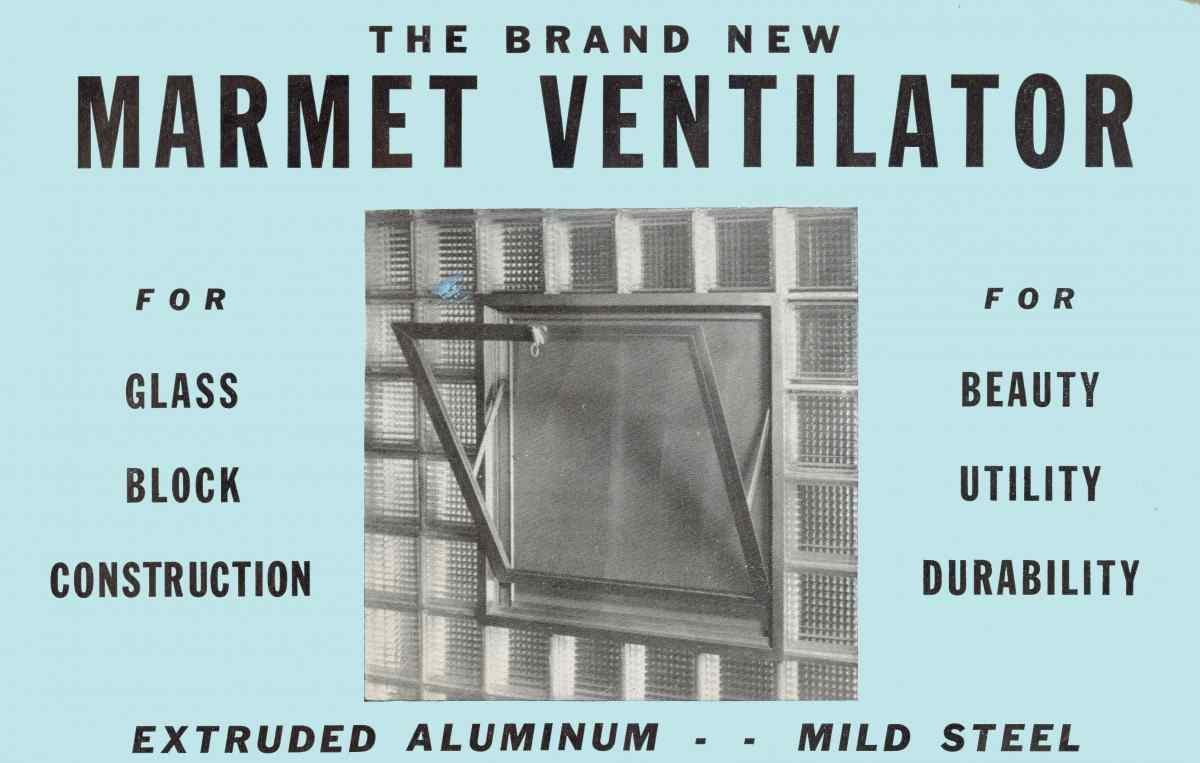
^ From the cover of a brochure announcing the new Marmet Ventilator for use with glass block walls, c 1950s.
Originally Marmet's ventilators were made from steel, but quickly switched to using the space-aged aluminum. In the postwar years, builders were increasingly recognizing the utility of aluminum windows beyond glass block ventilators. Within its first 5 years, Marmet began to produce custom aluminum windows for use in “window walls.” Aluminum was strong and light enough to support larger and larger windows, and many types of buildings adopted the new style of using large windows to make walls. In 1954, the main business of Marmet Corp was manufacturing “ribbon, projected, casement, and custom windows” for “monumental, institutional, and commercial applications.”2
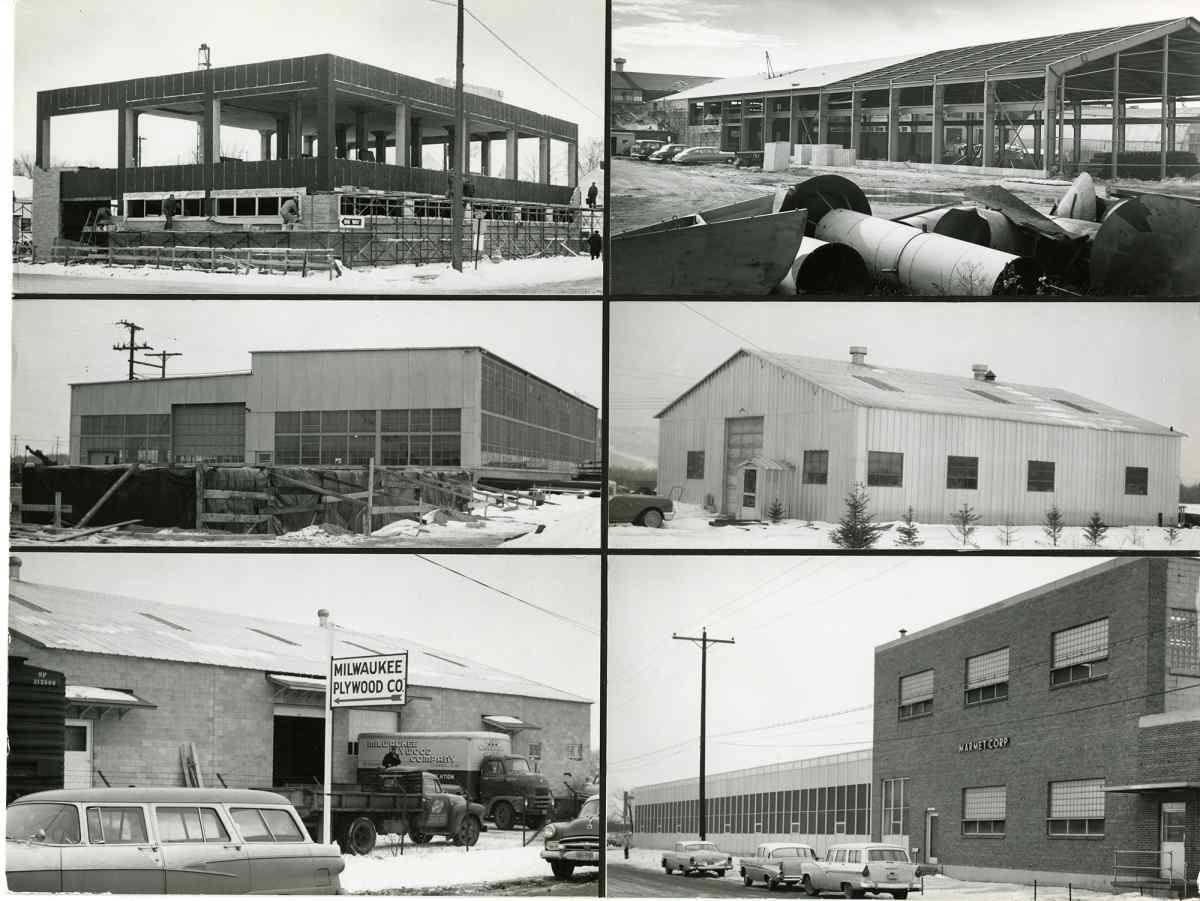
Unusual Early Products
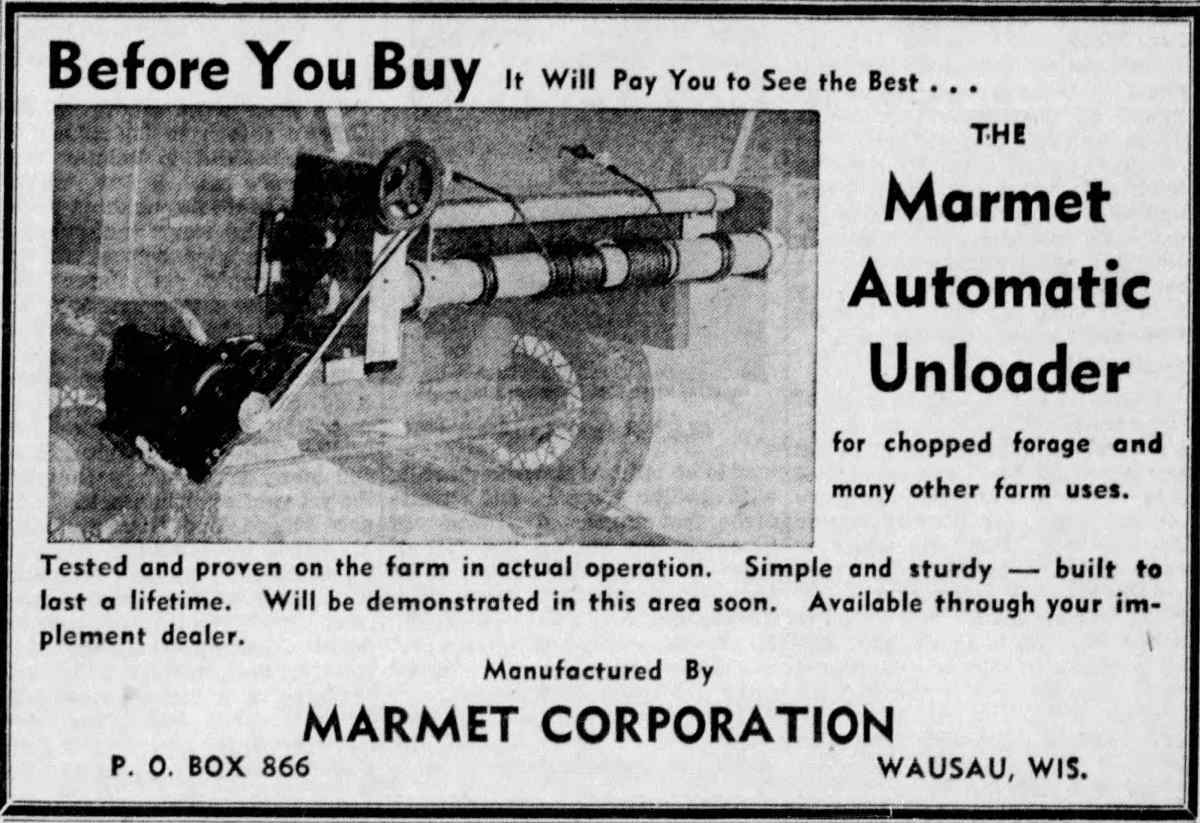
As one of the first aluminum extruding factories in the region, Marmet expanded to try producing other aluminum-related products. They produced a line of aluminum-covered doors and a line of “Marmet Automatic Unloaders” for farmers, which were relatively popular.1 Less popular was their attempts to produce “the first low-price combination home fire alarm and deep freeze failure warning system” called the “Mite-o-Larm” to let homeowners know of a fire or if their freezer gets too warm so they can take appropriate actions. But eventually these other products were dropped in favor of window fabrication, which would undergo a significant change.
The Window Curtain Wall
In 1960, Marmet started to produce a product it called the “Insu-Wall.” A newspaper article introducing the new design in 1960 described Insu-Wall as, "a sandwich-like grid panel in which the exterior metal is separated from the interior with a special insulating material bonded in such a way as to provide a complete barrier for all metal-to-metal thermal conductivity."4

^ From the cover of Marmet's 1964 Curtain Wall Catalog, showing the Post Office at Grand Rapids, Michigan as an example of the modern curtain walls Marmet produced.
The double panes of glass were held together with extruded aluminum frames, and the pocket of air between the glass helped to insulate the window from changes in temperature as well as reduce the build-up of condensation. Aluminum panels that were sometimes also integrated with the window panes, into a complete curtain that enveloped a building to provide a Modernist look.
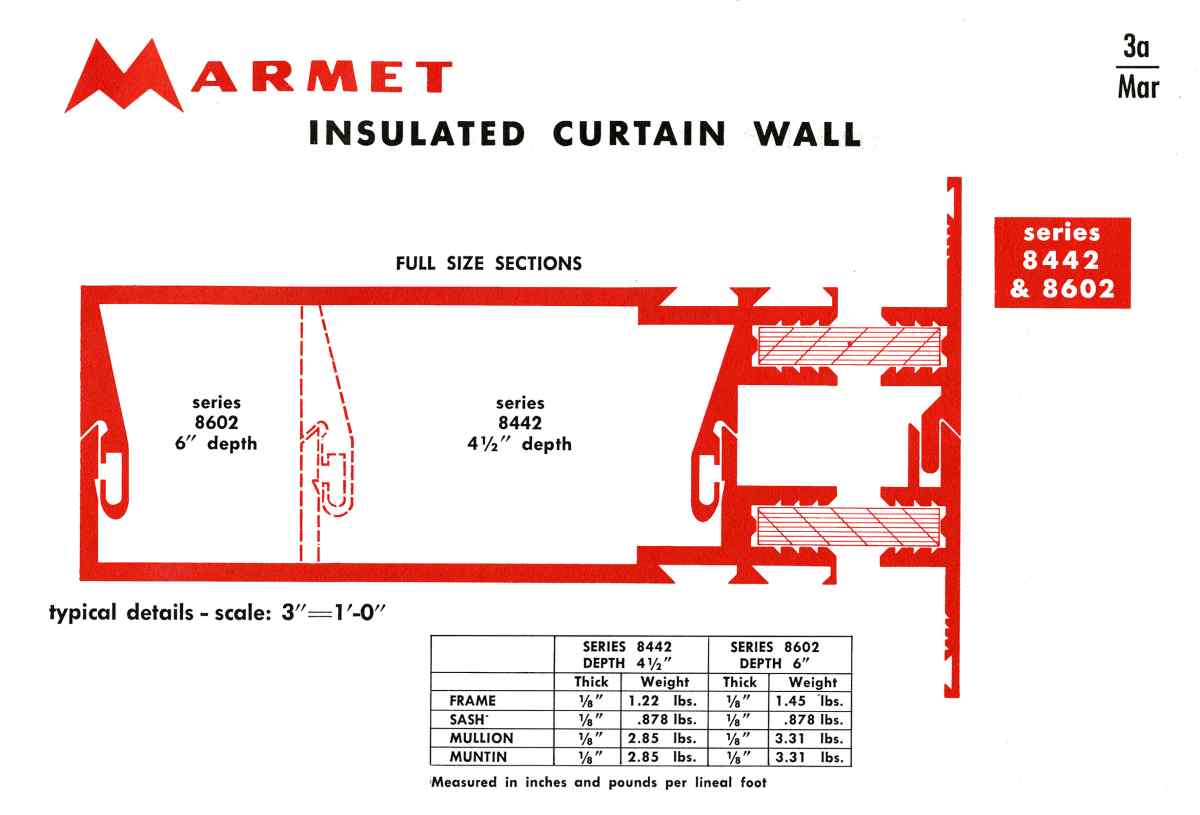
^ An illustration showing the internal components of Marmet's Isolated curtain wall (series 8442 and 8602), from 1964.
Marmet claimed that their "Insu-Wall" was the very first insulated curtain wall unit produced, although this claim was disputed in court by Bristol, Indiana's Kesko Products, Inc., who felt that Marmet had infringed on their "insulated metal window closure." In the end, the lawsuit would be dismissed in 1965 after two years of litigation.
But whoever first created the insulated curtain wall, by the mid-1960s, the insulated curtain wall had become a staple of modern American architecture. Just as insulating glass block walls had become popular in the 1940s and 1950s, the larger aluminum-clad insulated windows were widely adopted in American architecture of the 1960s and 1970s. These insulated aluminum windows helped make it feasible for large window wall systems to be made, and they had become the core of Marmet’s business by the mid-1960s.3
Changes
Although the aluminum panels fell out of popularity by the end of the 1960s, aluminum window wall systems had become an integral part of modern architecture. From modest commercial and institutional buildings to sky scrapers, Marmet provided aluminum windows to projects across the globe.
And over the next two decades, Marmet and other window and curtain wall manufactures worked to make their products more energy efficient and branching out into other products such as replacement windows.
Marmet also benefited from the extensive network created over decades of expansion by Hoffer Glass. It established branch offices across the United States to market its products. By 1951, Marmet had branches in New York, Chicago, St. Louis, and Lexington. Unlike Hoffer's products, which were often marketed towards a public market as part of their retail chains, customers buying by placing orders through Marmet. And over the course of the twentieth century, Marmet expanded to further markets.
Labor-Management Disagreements
With the onset of a national recession at the start of the 1990s, in part caused by the bursting of the construction boom of the late 1980s, Marmet found itself in financial difficulties. And Marmet's decisions to cut costs to get through the recession led them to conflict with their union.
Conflicts with Labor was not entirely new for Marmet, as the company had occasionally faced strikes from the unions over its lifetime. During a few short years from 1958 to 1961, Marmet saw three strikes (Dec 1958-Jan 1959, October 1959, and May 1961-June 1961), and another broke out a decade later in 1970-1971. But the company and union were always able come to an agreement.
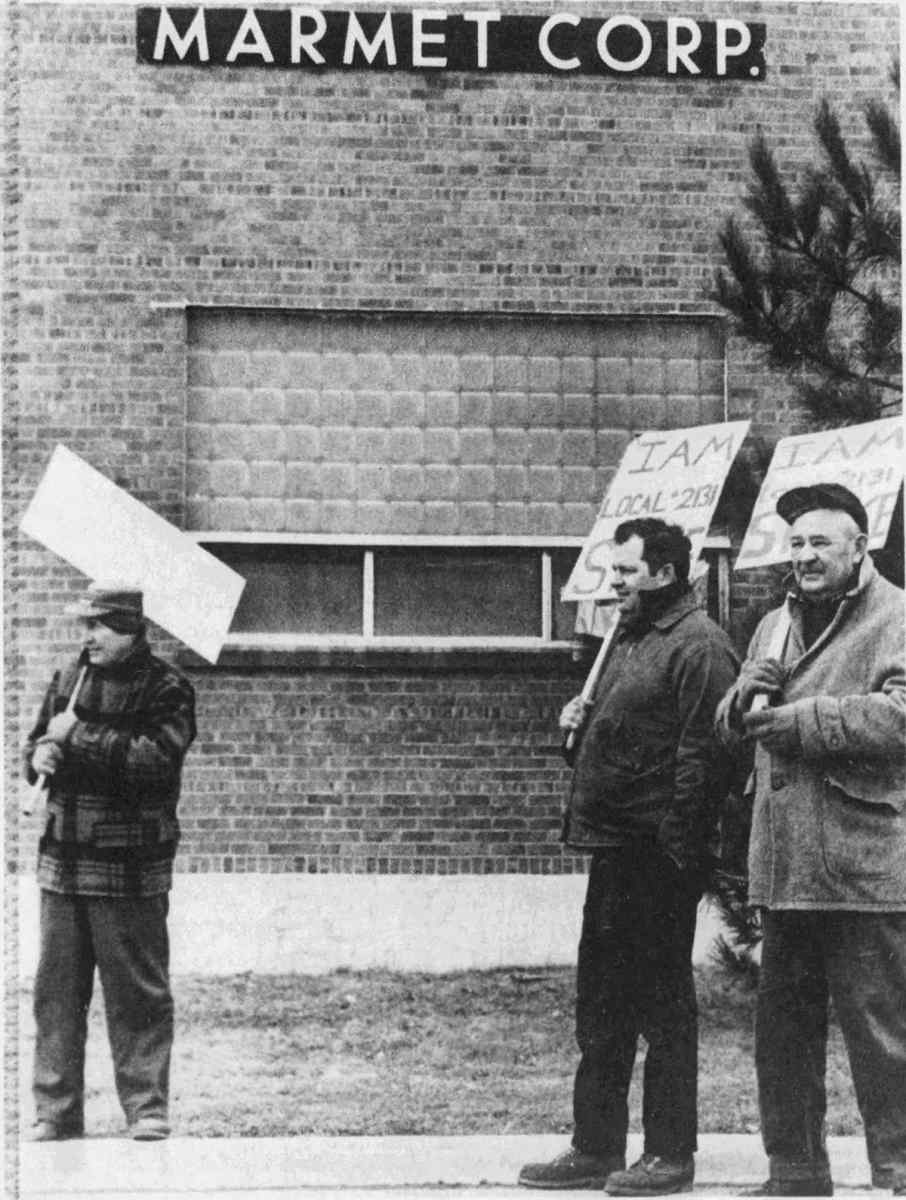
^ Strikers picketing outside Marmet during a 1970 strike. Picture from the Wausau Daily Herald, April 7, 1970.
In the spring of 1992, the union rejected the company's request to extend temporary pay cuts made the previous year. The cuts ranged from 12% for employees in the office and 15% for those in the shop, and came shortly after rounds of layoffs. The Union hoped to come to a better agreement with the company, and although a strike was an option available to them, they did not get far enough into negotiations to call one. Instead Marmet responded the following day by saying they would have to close the factory entirely.
In the aftermath of the closing, there was a vocal contingent of the 200 now unemployed workers, who blamed management and owners for not being willing to make the difficult changes necessary to let the company survive.
"A good leader at the top has to look in all corners and listen to the whole body, then decide what is the best road.
"God bless the people of Marmet who worked so hard over the years to build a good company. It did not fail because you did not give it your best, it failed because management let you down."
-Jerry Nantell, former VP of Marketing at Marmet, in the editorial "Worker blames management for Marmet's Closing," Wausau Daily Herald (23 January 1993) 8.4
It is also clear that Marmet's future was in question following the death of Anton Hoffer in 1986. With it's founder gone, control of the company fell to the Hoffer family. Not all of the Hoffer children were interested in keeping the company around, and ultimately this divided opinion on the fate of the company did not help them weather the difficulties.
Whether Marmet was truly no longer a financially viable company as the owners claimed was the case, or whether it would have been possible to turn the company around with some changes, the closing of Marmet was a blow to the community. The factory was kept open for a few more months after the workers agreed to accept the pay cuts once again, but ultimately the owners elected to close the shop on August 28, 1992.
Marmet's Legacy
The Marmet facilities in Wausau were left vacant, and have been rented out to various companies in the insuing decades (including a travel agency called "Travel Travel" ). And because Marmet window wall systems were not a marketable or recognizable product, no company swooped in to purchase the brand (as sometimes happened with residential, wood windows). And so it's biggest legacy was the impact the company had on the wider window industry.
Over its 46 years in business, Marmet was responsible for the burgeoning window industry in Marathon County. Employees like Glenn Straub and Edwin Jablonski had gone on to start their own successful window manufacturing companies. And Marmet was an important force in moving the industry from a simple manufacturer of glass block ventilators to creating the modern window wall system.
Sources
1. “Farmers—Attention” ad, WDH, (21 August, 1951), 16.
2. “Growth of Marmet Corp. Noted in Magazine Item” WDH (April 24, 1954).
3 "First in Industry: Marmet Introduces new Insulated Curtain Wall" WDH (22 October 1960), 9.
4. Nantell's statement was not without its own criticism, and sparked other employees to write in pointing out that as management himself, he was part of the issue (which he in turn agreed with). And the extent to which his criticism (and others) is unclear.

